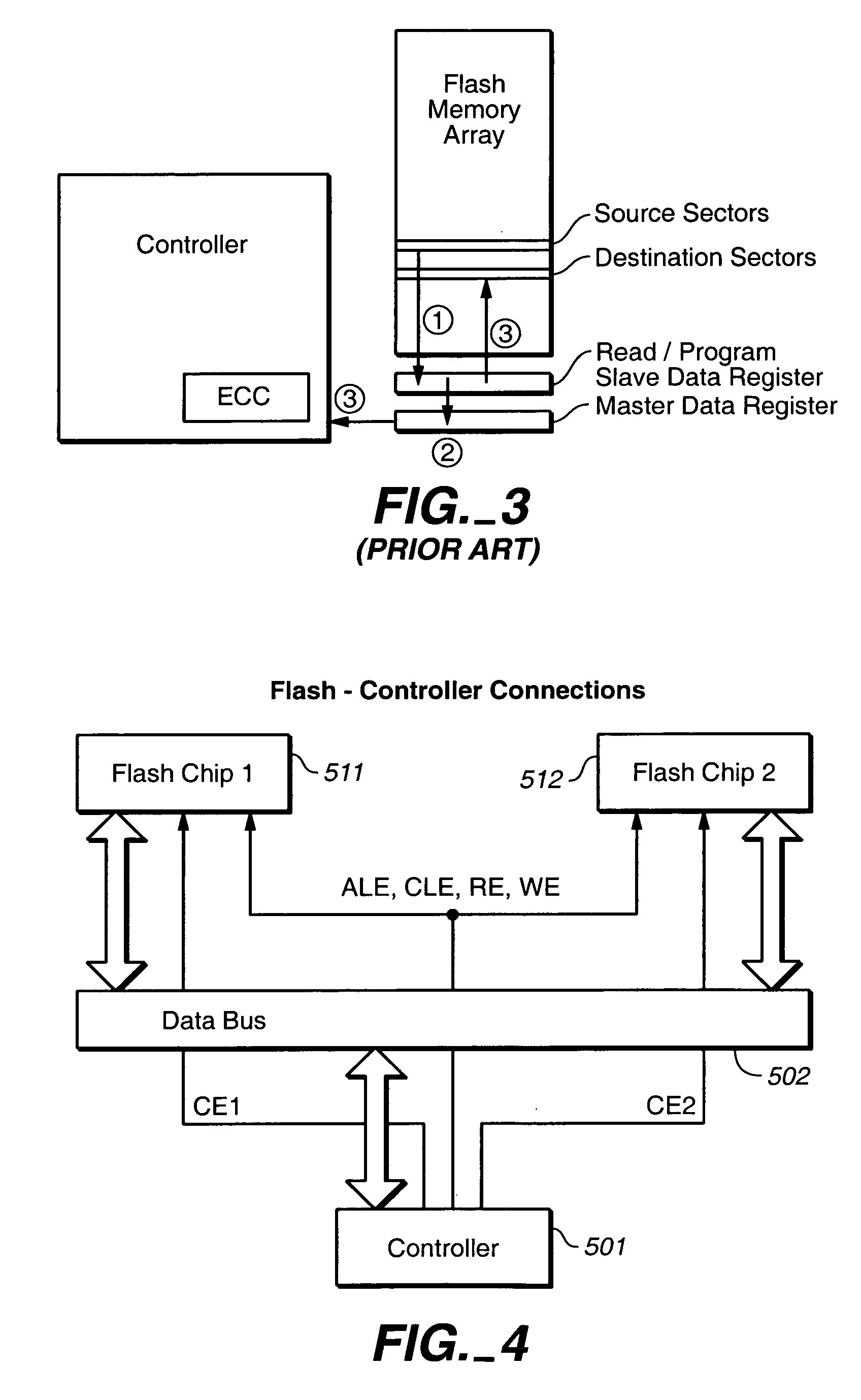Off-chip data relocation
- Summary
- Abstract
- Description
- Claims
- Application Information
AI Technical Summary
Benefits of technology
Problems solved by technology
Method used
Image
Examples
Embodiment Construction
[0044] In a first aspect, the present invention generalizes the copy operation to allow data to be copied between two memory blocks that may be on two different chips, on two planes on the same chip, or as well as on the same plane of the same chip. Consequently, the methods described here provide a single data copying mechanism that allows data to be copied between any two locations in a flash or other memory array. The performance for the more general copy is the same as for on-chip copy as it is generally applied in the prior art. Removing the restrictions on data location, result in improved algorithm operations that reduce the frequency of copying data.
[0045] Generally, the method described here allows data in memory block to be copied to another memory block that may be:
[0046] 1) In a different chip;
[0047] 2) In a different plane of the same chip; or
[0048] 3) In the same plane of the same chip.
[0049] To support this functionality, the control logic and data paths within t...
PUM
 Login to View More
Login to View More Abstract
Description
Claims
Application Information
 Login to View More
Login to View More - R&D
- Intellectual Property
- Life Sciences
- Materials
- Tech Scout
- Unparalleled Data Quality
- Higher Quality Content
- 60% Fewer Hallucinations
Browse by: Latest US Patents, China's latest patents, Technical Efficacy Thesaurus, Application Domain, Technology Topic, Popular Technical Reports.
© 2025 PatSnap. All rights reserved.Legal|Privacy policy|Modern Slavery Act Transparency Statement|Sitemap|About US| Contact US: help@patsnap.com



